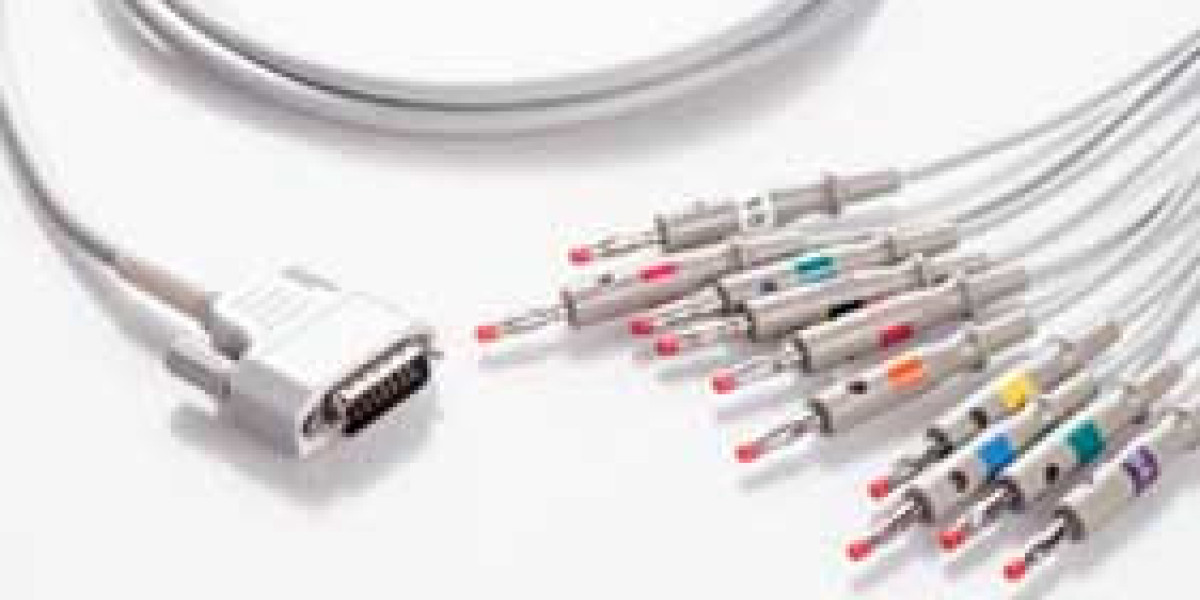Patient monitors today are sophisticated devices that combine various physiological measurements. Advanced ECG and EKG machines featuring precise ECG 12 lead placement are at the core of cardiac monitoring. These machines require correct electrode placement to capture the heart’s electrical activity accurately. The 12-lead ECG system uses 10 electrodes placed on specific anatomical landmarks-four limb electrodes and six chest (precordial) electrodes-to generate 12 different views of the heart's electrical activity. Proper placement of these electrodes is vital for accurate diagnosis and monitoring.
SPO2 and EtCo2 Monitoring Devices
SPO2 and EtCo2 monitoring devices with expert ECG 12 lead placement capabilities provide continuous oxygen saturation and end-tidal CO2 measurements alongside cardiac monitoring. Integrating these parameters enhances patient assessment, especially in critical care. The synergy between respiratory and cardiac monitoring devices requires compatible accessories and expert training in ECG 12 lead placement to minimize artifacts and ensure data integrity.
EKG Machines and Accessories
Reliable EKG machines and accessories including ECG 12 lead placement guidance are indispensable in cardiology departments. Accessories such as ECG lead wires, trunk cables, and telemetry leadwires must be compatible with the patient monitors to maintain signal quality. Disposable ECG electrodes optimized for ECG 12 lead placement are used to reduce cross-contamination risks and improve hygiene. These electrodes typically use silver chloride (Ag/AgCl) gel pads for optimal conductivity and patient comfort.
NIBP and IBPTOCO Monitoring Solutions
NIBP monitoring solutions with integrated ECG 12 lead placement support allow simultaneous blood pressure and cardiac electrical activity monitoring. This integration is critical in managing hypertensive emergencies or perioperative care. Similarly, IBPTOCO fetal monitoring combined with ECG 12 lead placement expertise enables simultaneous fetal heart rate and maternal cardiac monitoring, essential during labor and delivery.
Tourniquet Cuff and Hoses Supply
Tourniquet cuff and hoses supply with ECG 12 lead placement training ensures that clinicians can effectively use these devices without compromising ECG signal quality. Proper training in ECG 12 lead placement helps avoid interference caused by cuff inflation or hose positioning, which can distort ECG tracings.
Replacement Parts and Temperature Monitoring Systems
Replacement parts for patient monitors with ECG 12 lead placement accuracy include cables, connectors, and electrodes, which must meet stringent quality standards to maintain monitoring reliability. Temperature monitoring systems with professional ECG 12 lead placement services provide continuous core body temperature data alongside cardiac monitoring, aiding in comprehensive patient management.
Disposable ECG Electrodes and Accessories
Disposable ECG electrodes and accessories optimized for ECG 12 lead placement are critical for infection control and signal fidelity. These electrodes come in various sizes and adhesive types, designed for short-term use and easy removal. Their proper application following skin preparation protocols reduces artifacts and improves diagnostic accuracy.
Summary
The integration of professional patient monitors with accurate ECG 12 lead placement service alongside SPO2, EtCo2, NIBP, IBPTOCO, and temperature monitoring systems represents a holistic approach to patient care. Advanced ECG and EKG machines require reliable accessories and expert guidance in electrode placement to ensure precise cardiac monitoring. Disposable ECG electrodes and replacement parts play a significant role in maintaining system hygiene and performance. Additionally, training in ECG 12 lead placement is essential when using tourniquet cuffs and hoses to prevent signal interference. Together, these components and services form the backbone of effective patient monitoring in clinical environments.








